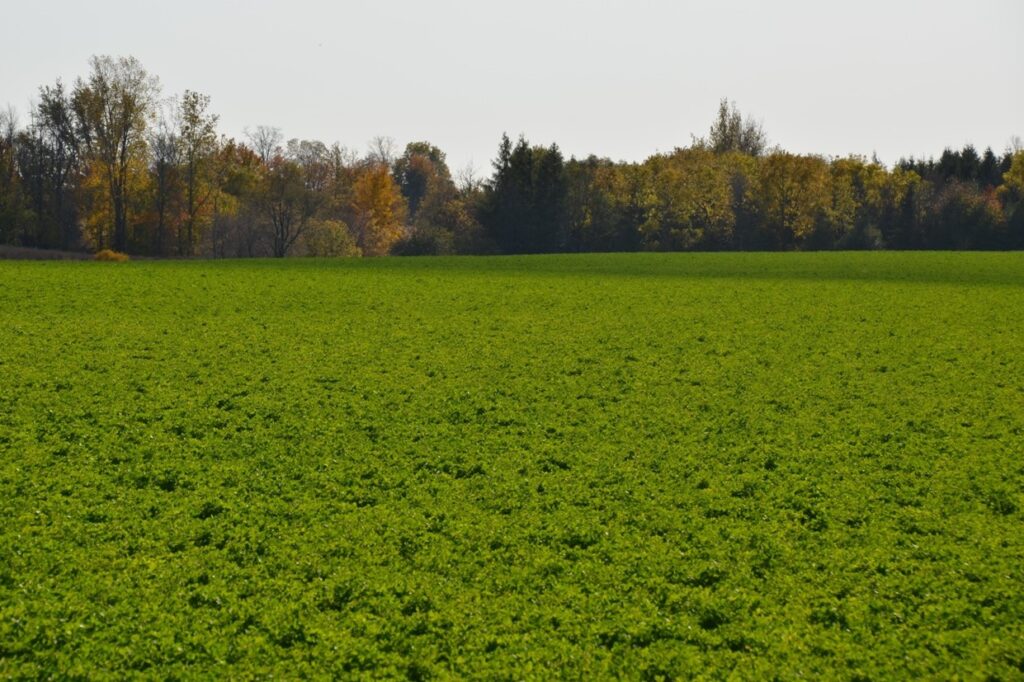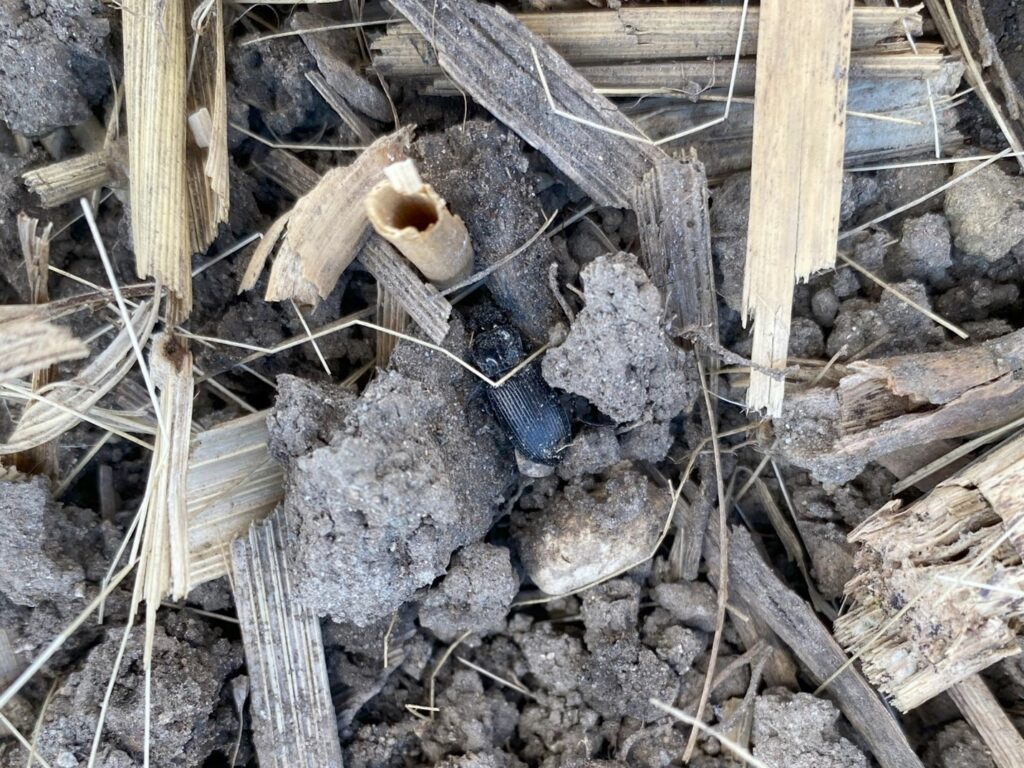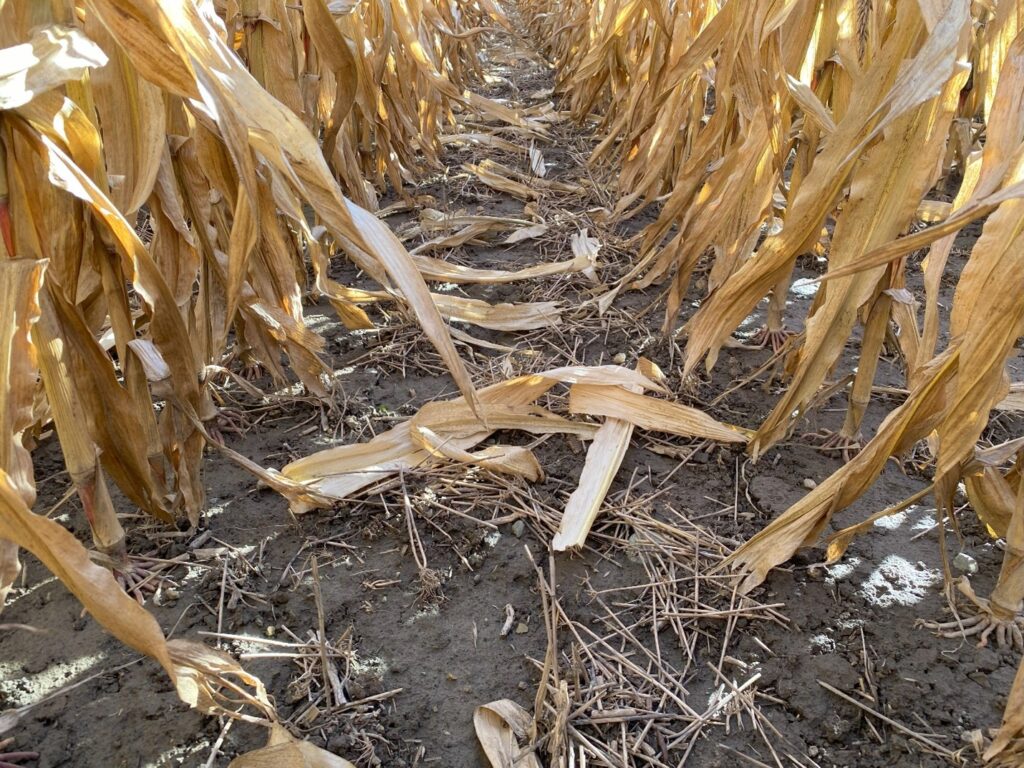Soil management refers to how a farmer works with their soil to produce crops. It includes all management aspects that impact soil, including the types and sequence of crops grown, residue management, tillage intensity and frequency, nutrient and pH management, and soil amendment application.
Soil management has a strong influence on the productivity of any given field. When done in a manner that protects soil from degradation, contributes organic materials, and supplies adequate nutrients, soil management helps to build healthy soils. Such soils effectively perform many critical functions and support vigorous plant growth. Not all soils are equal, however. Ontario has a wide diversity of soil types, as influenced by past glacial activity and climate. Optimal soil management varies by inherent soil properties such as texture and drainage; some soils are more responsive to – and others, more demanding of – good soil management. Regardless of soil type, sound soil management practices result in more productive and resilient soils over time.
What is good soil management?
Soil management is a balance between providing conditions for optimal crop growth in a single season and conserving or enhancing a soil’s capacity to support productive crops into the future. What constitutes good soil management is context specific. For example, practices that work well in the Canadian Prairies or the Midwest United States are not necessarily suited to Ontario soils and crop production systems. However, the principles of good soil management are proven and consistent. They include, where possible:
- Growing a diverse crop rotation that includes fibrous-rooted crops and/or perennials (Figure 1)
- Maintaining residue cover on the soil surface to protect against erosion by water and wind
- Minimizing tillage frequency and intensity to maintain soil structure
- Using living roots, for example through cover crops, to improve soil tilth
- Applying organic amendments such as manure and compost to build soil organic matter
- Integrating livestock to provide grazing and harvested forage crop opportunities
Farmers practicing good soil management also limit physical harm to soil by avoiding trafficking or tilling soil that is too wet and using technologies to minimize compaction damage from heavy equipment.

Figure 1. Inclusion of perennial crops such as alfalfa in rotation is an ideal component of good soil management.
Good soil management leads to healthy soil
Soil is a living ecosystem that consists of billions of organisms, from microscopic bacteria and fungi to larger earthworms and ground beetles (Figure 2). Together, these organisms and their activities underpin critical soil functions such as residue breakdown, soil aggregation, and water regulation. Good soil management results in improved conditions for soil life, including greater pore space and ample and diverse food sources. An abundant and thriving soil ecosystem, in turn, supports healthy, high functioning soil.
Relative to poorly managed soils, healthy soils tend to:
- Infiltrate water faster and provide more plant-available water to crops
- Have better soil structure, which helps lower erosion and compaction risk and supports a better seedbed and rooting environment
- Cycle crop residue more rapidly (Figure 3), which can result in fewer residue challenges and more soil-supplied nutrients such as nitrogen
- Harbour fewer diseases and pests
- Be more resilient to both extreme rainfall and drought

Figure 2. A ground beetle in a no-till soybean field in Ontario.

Figure 3. Earthworms recycling crop residue by first collecting it in middens (mounds of residue and castings) in a strip-tilled Ontario corn field.
Read on in the Soil Management section for more information on management strategies for achieving healthy soils. The section also includes information on understanding inherent soil properties and key soil degradation risks.